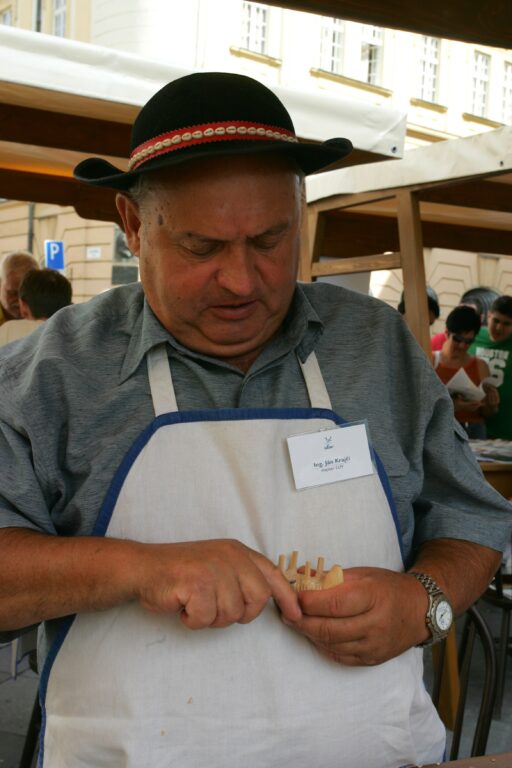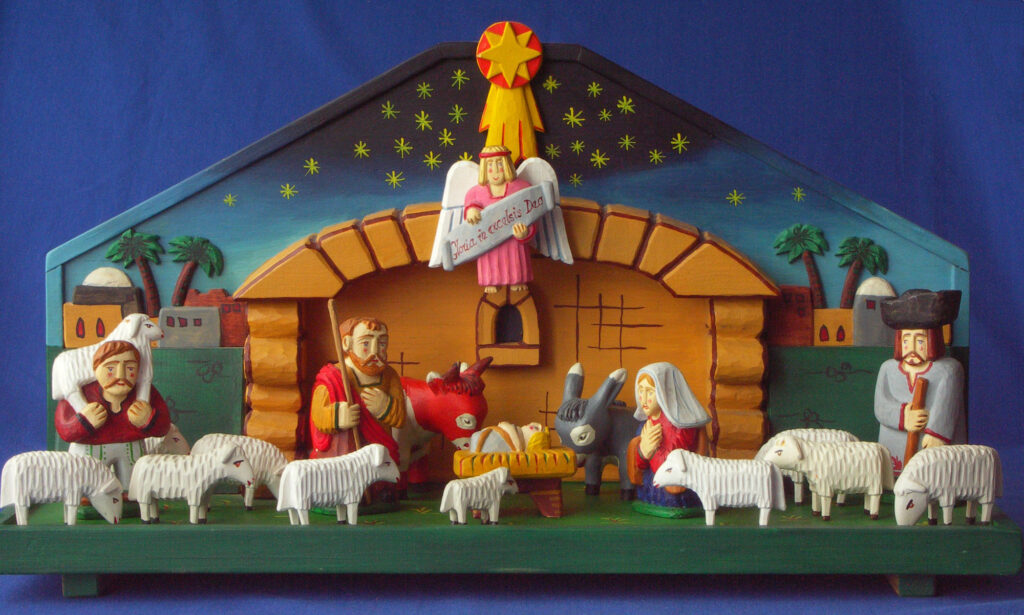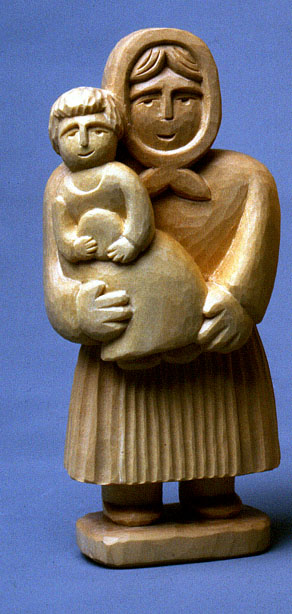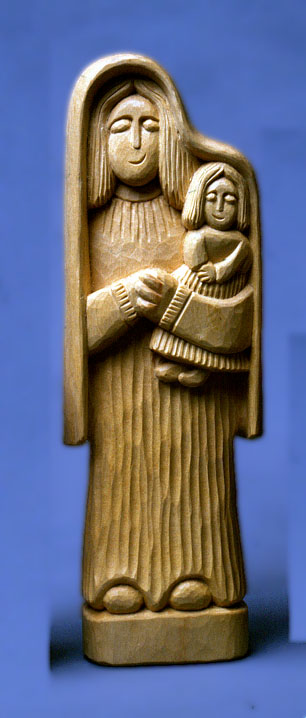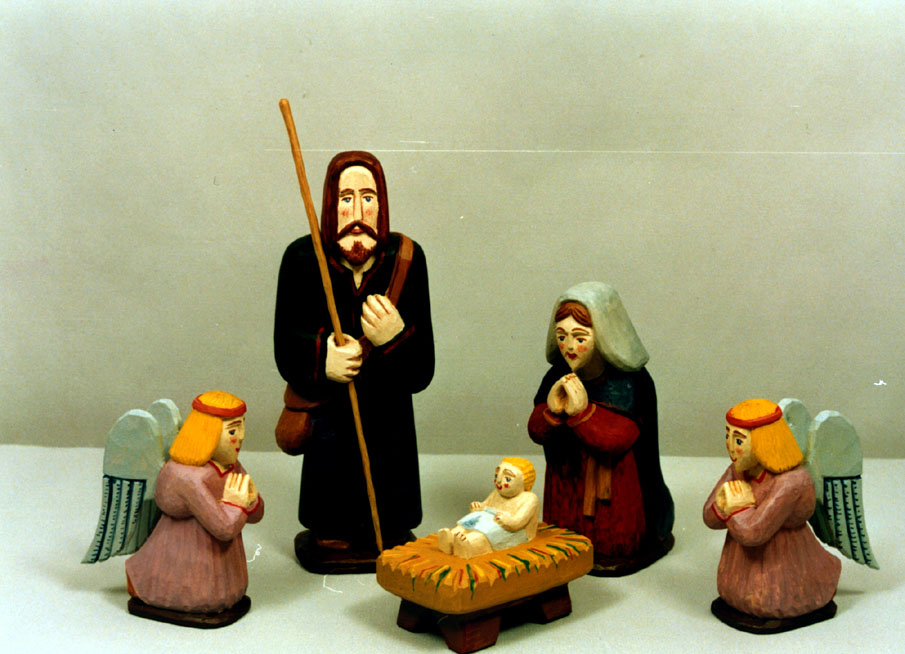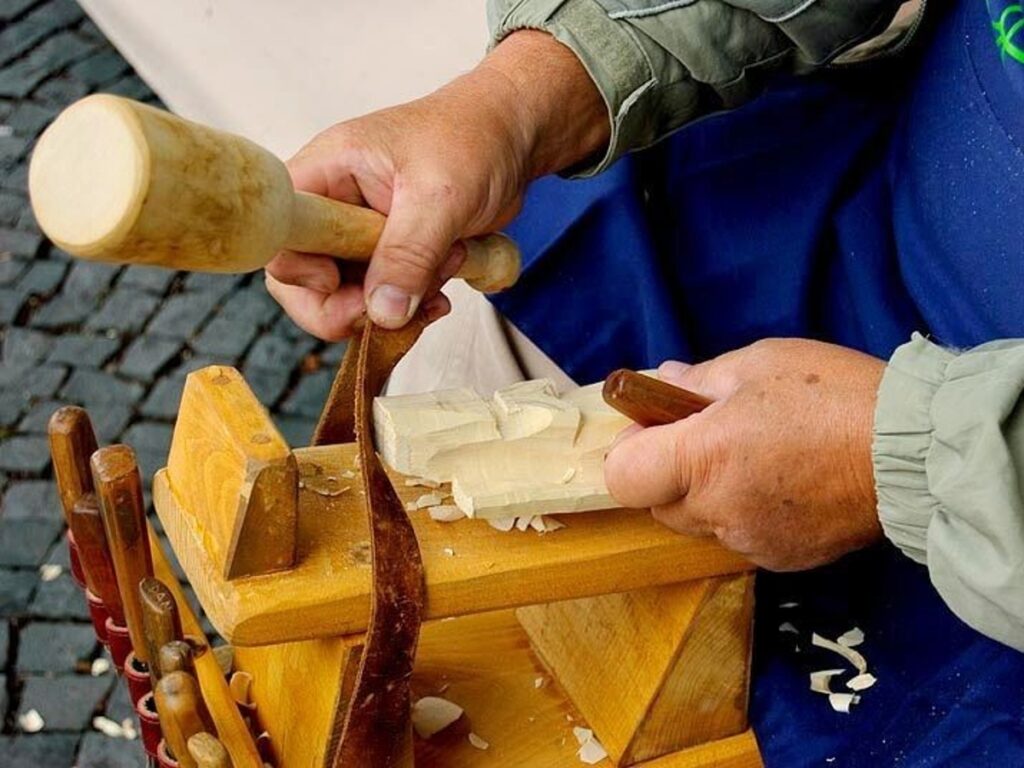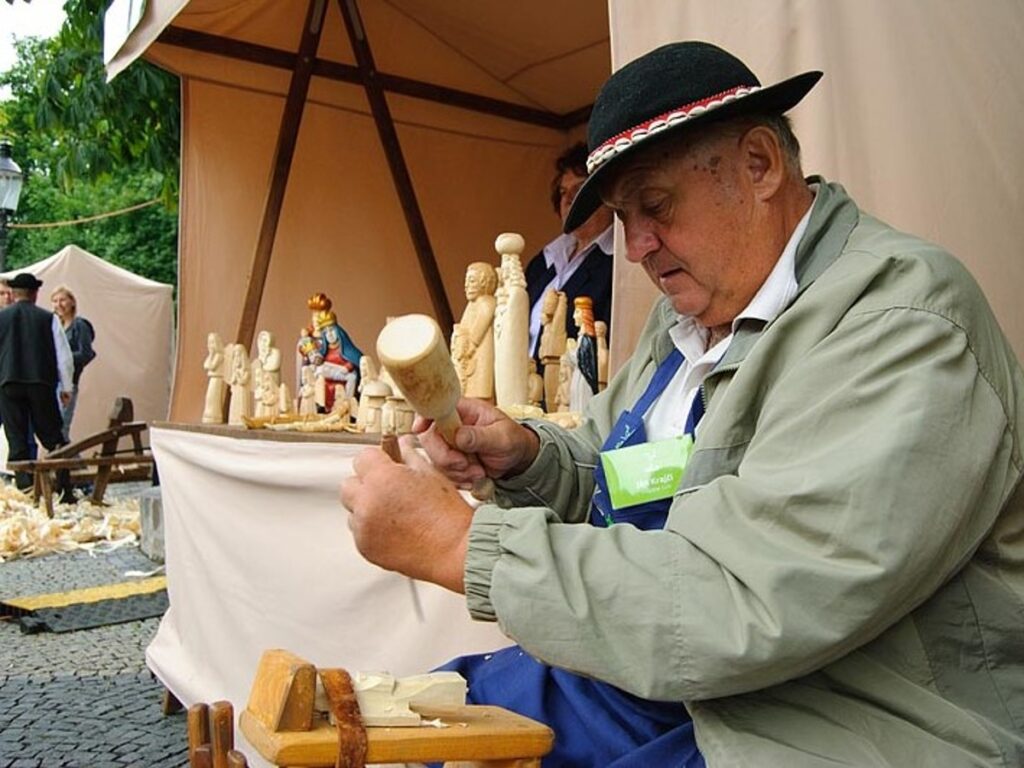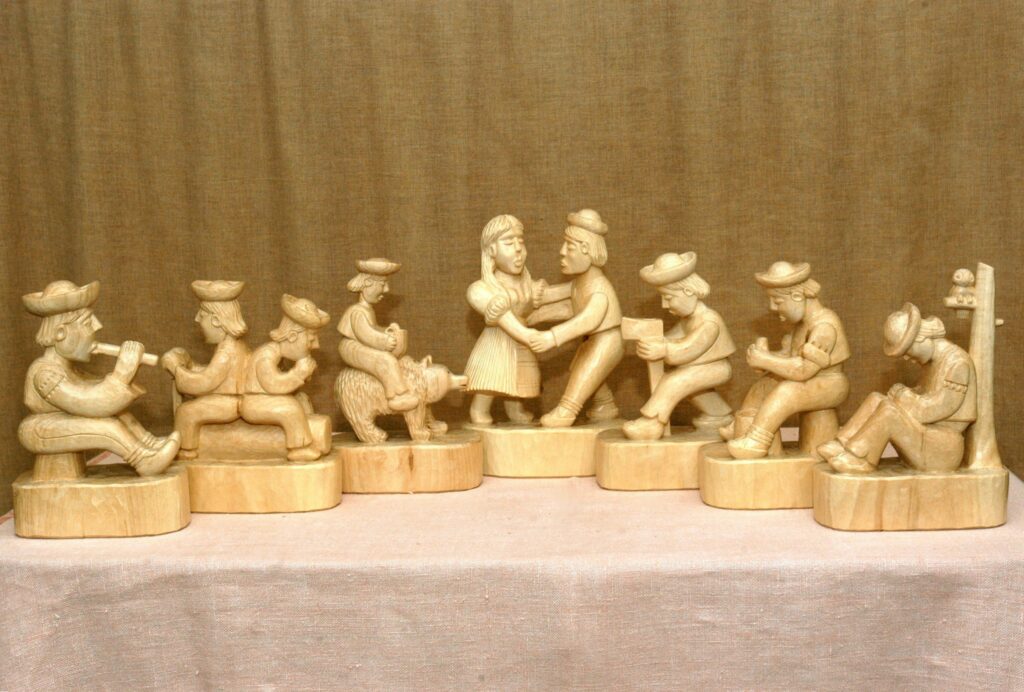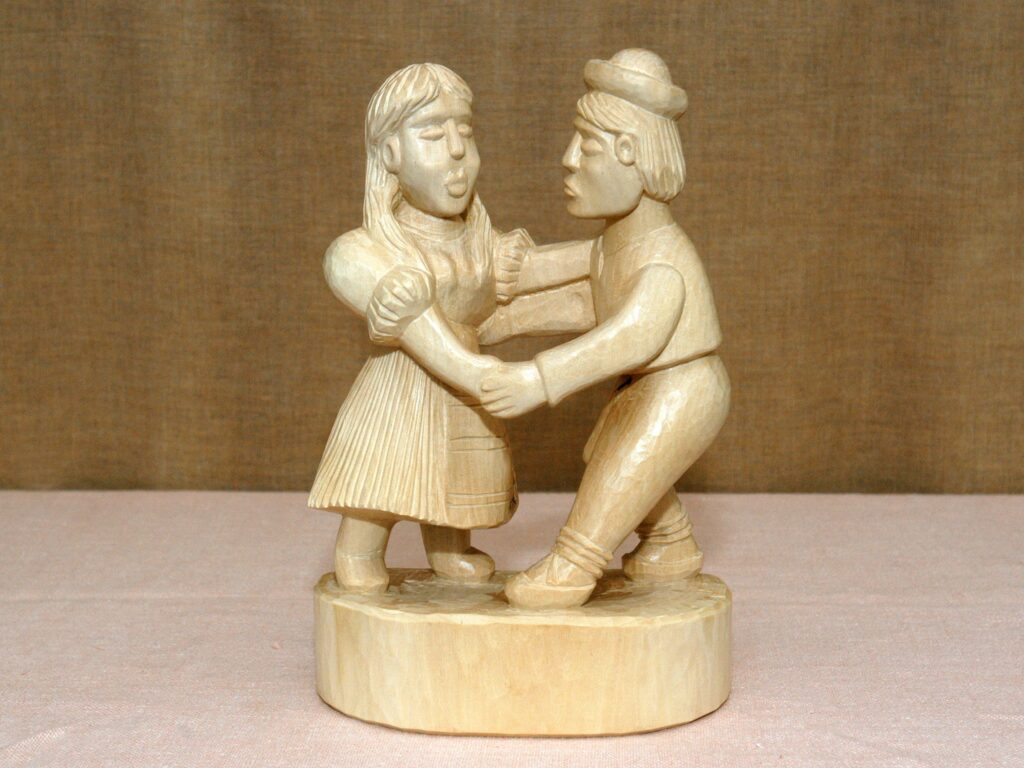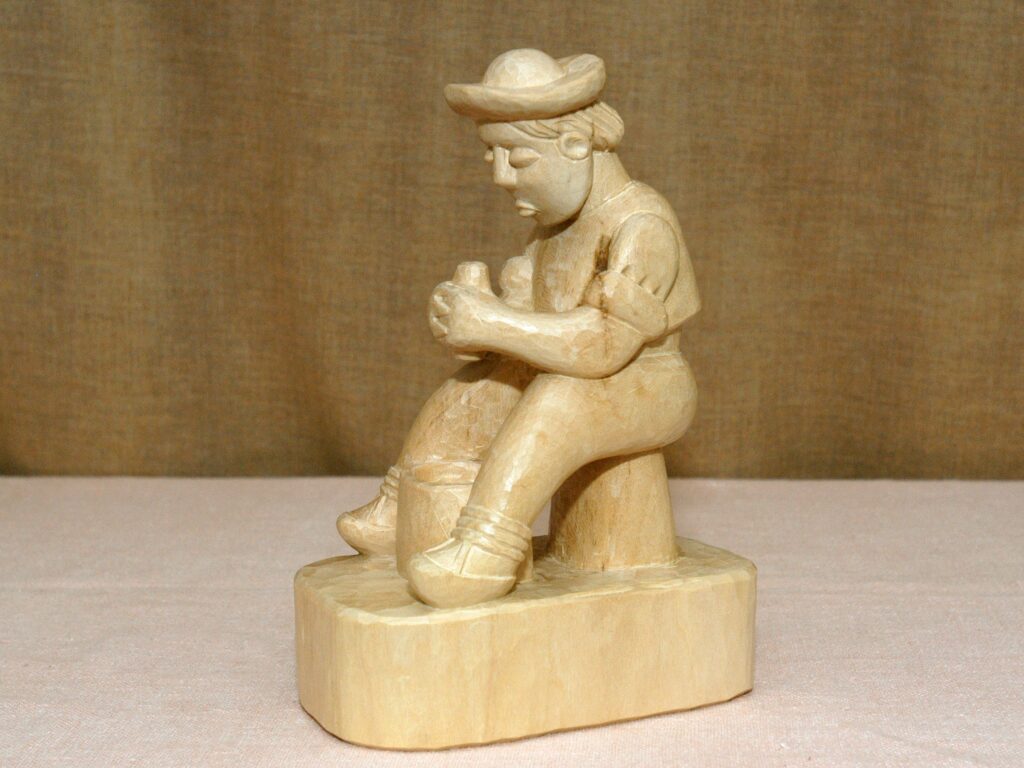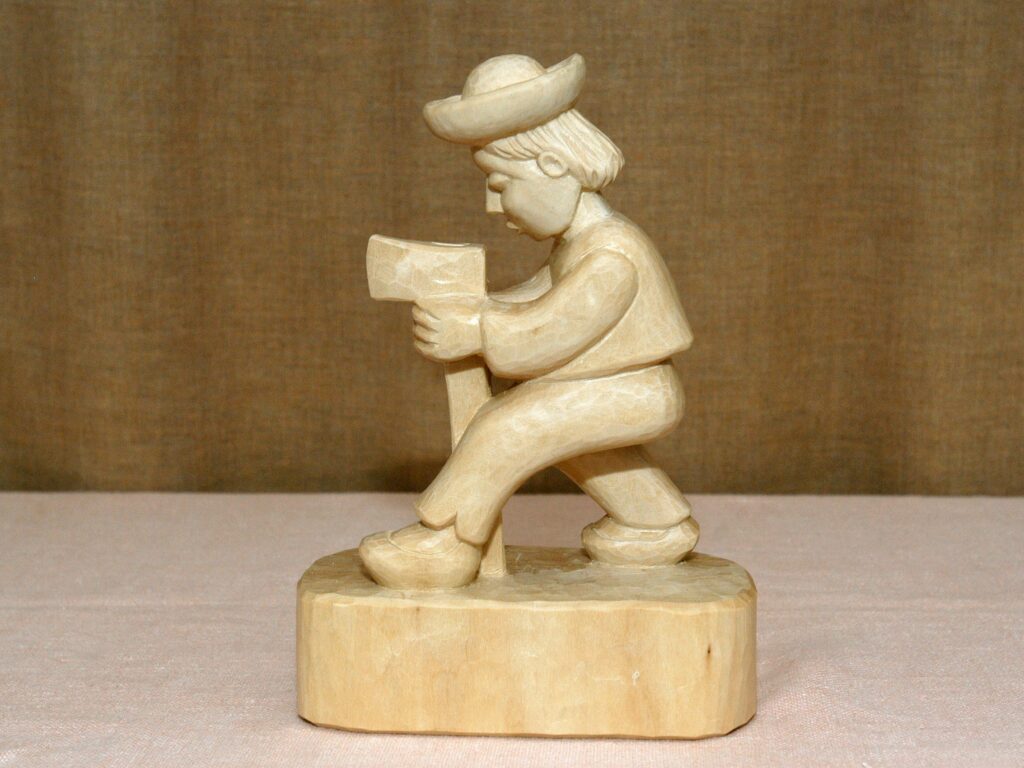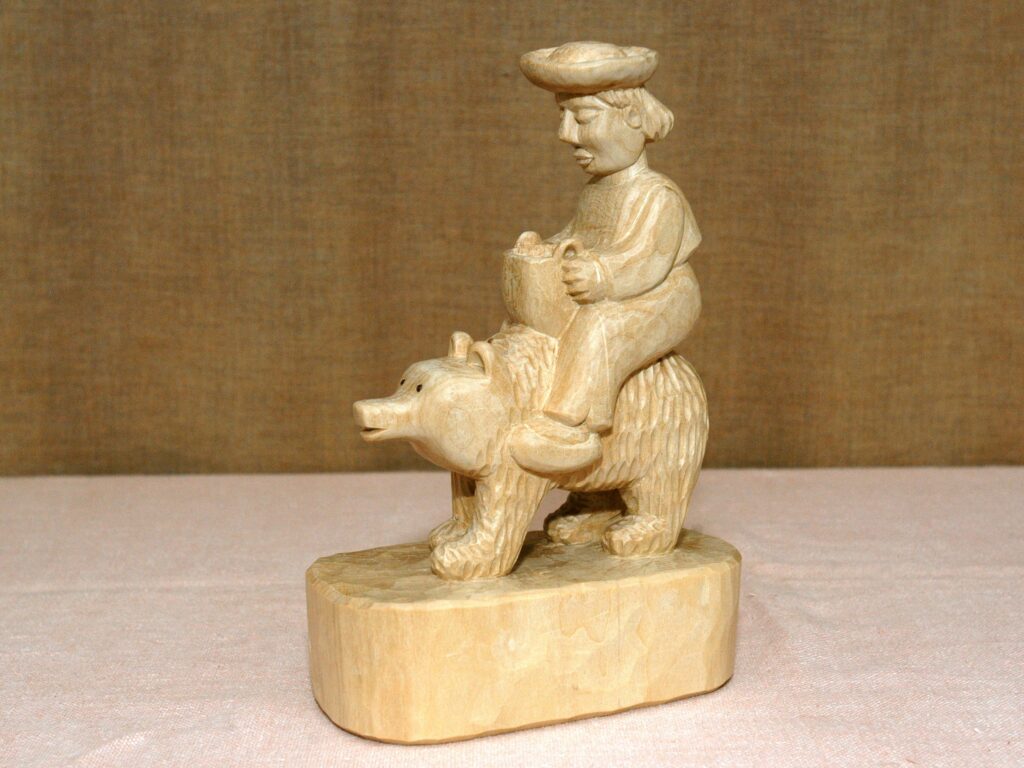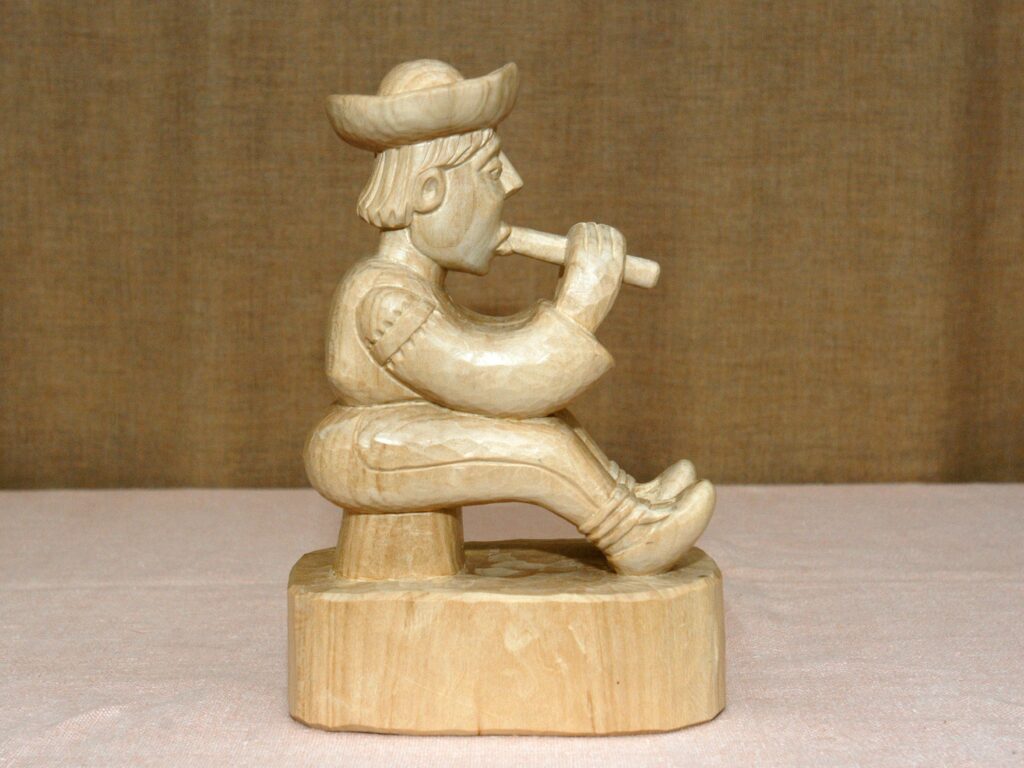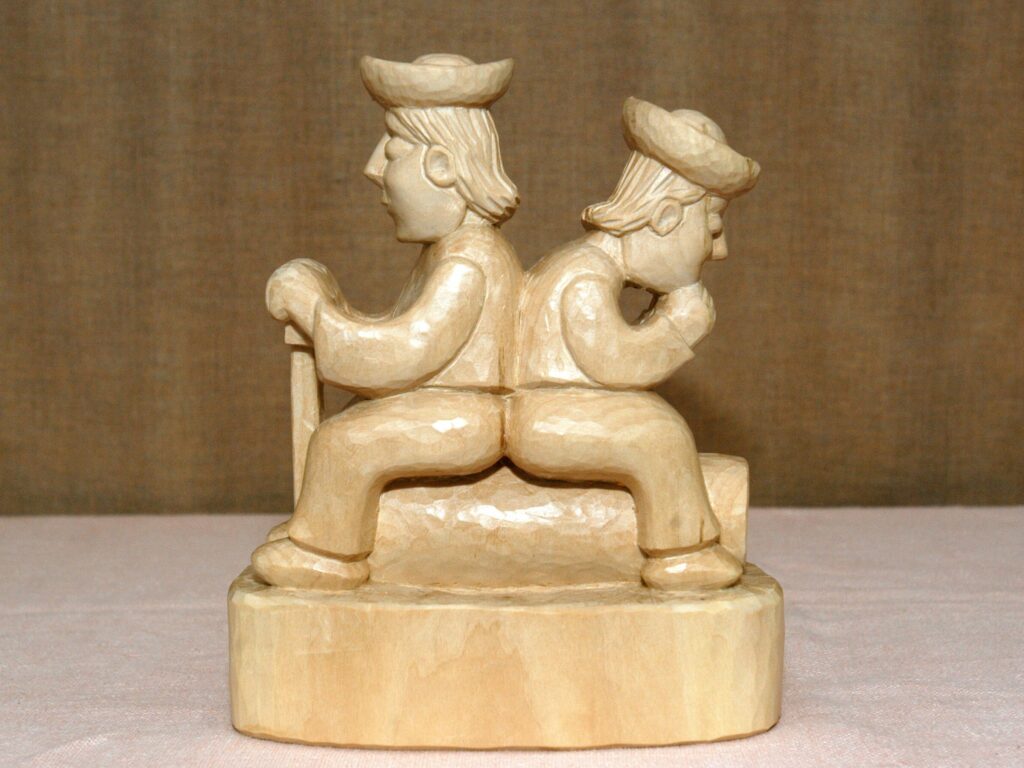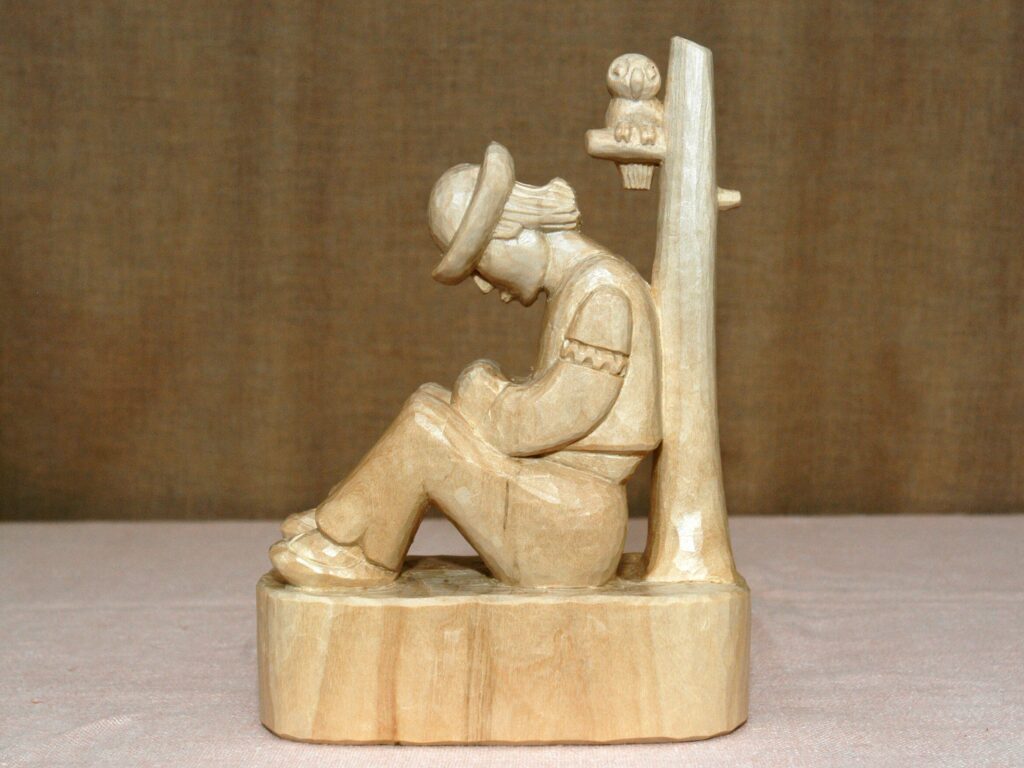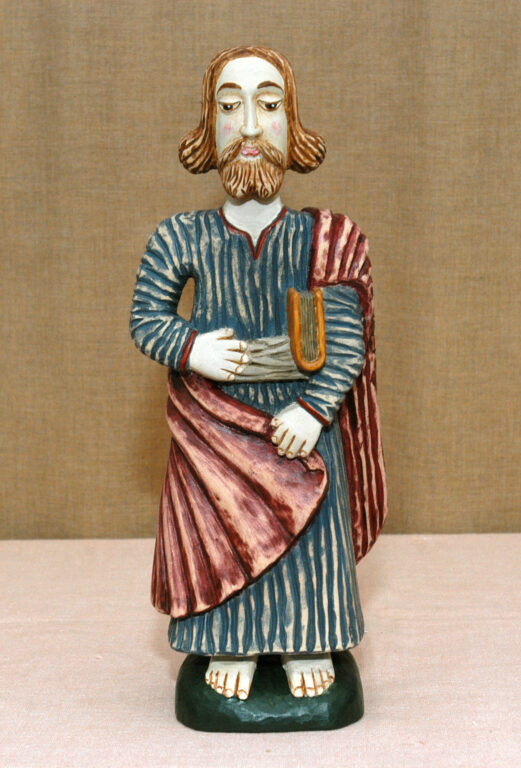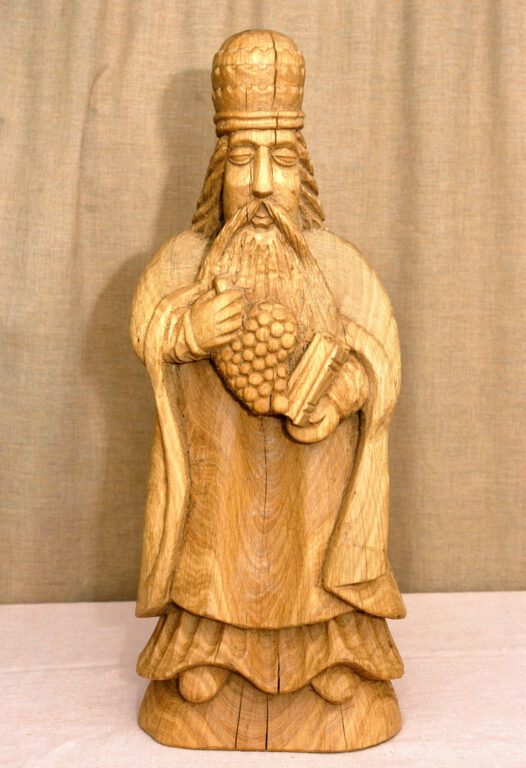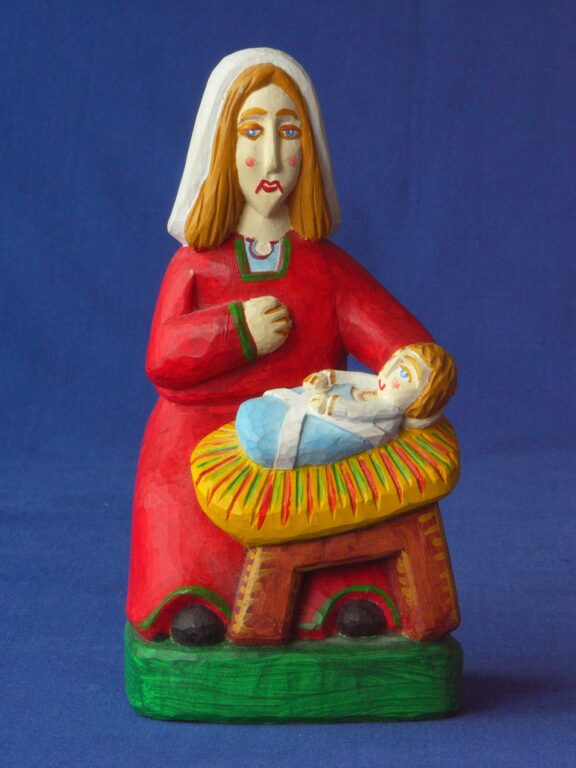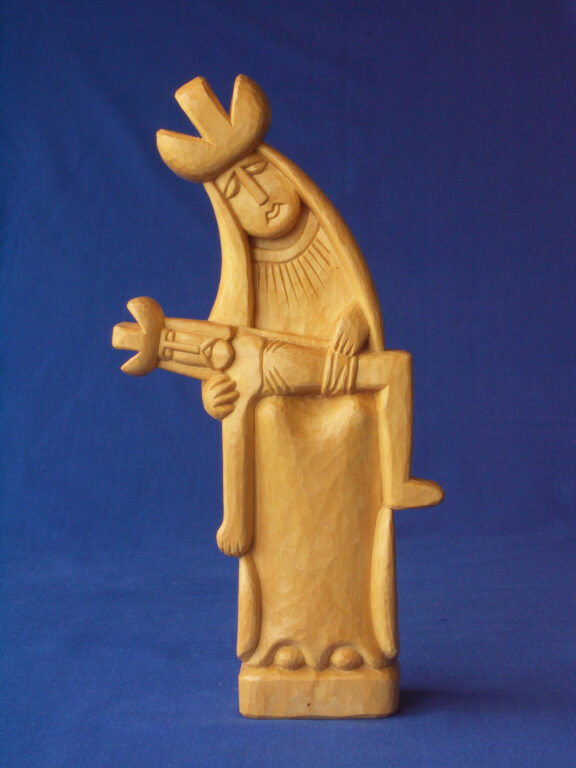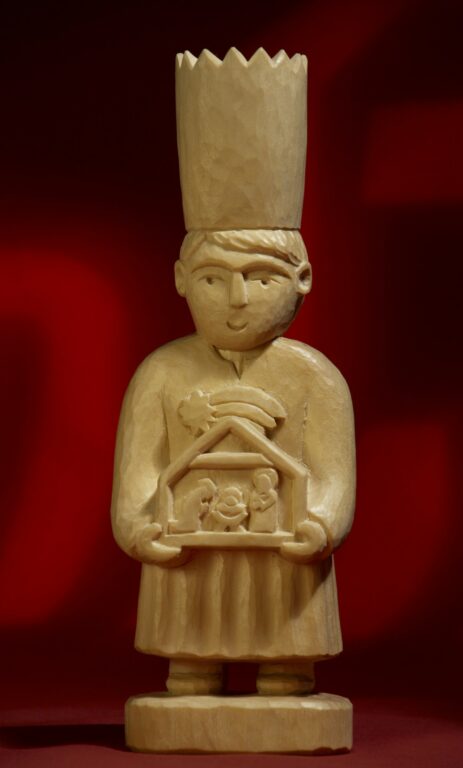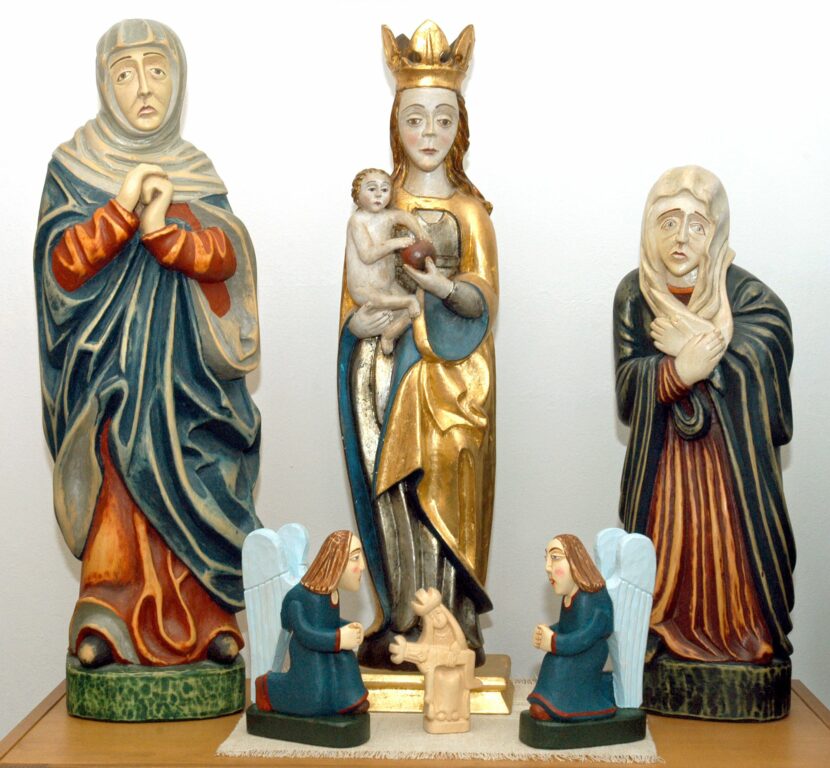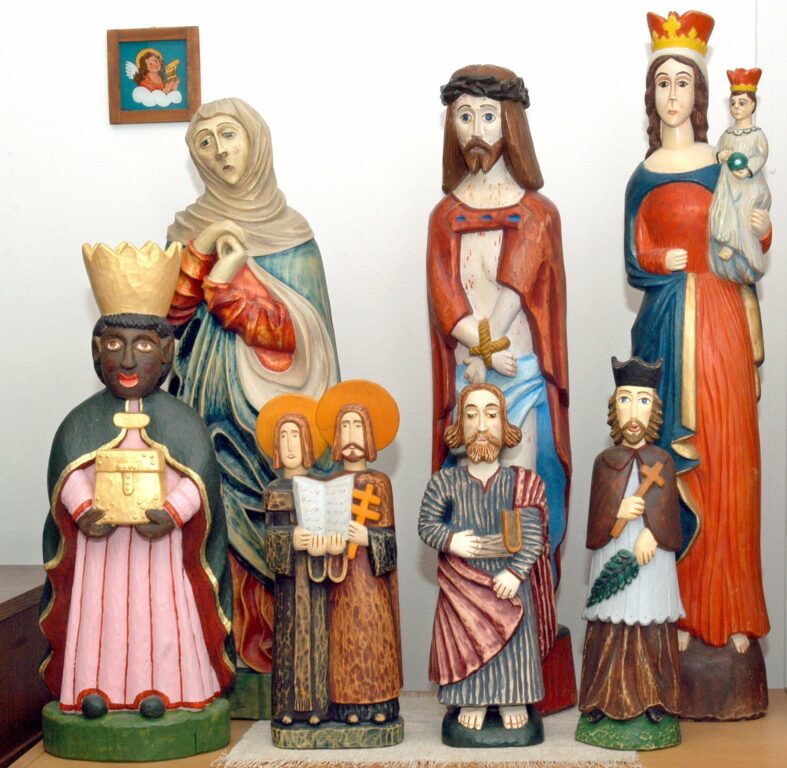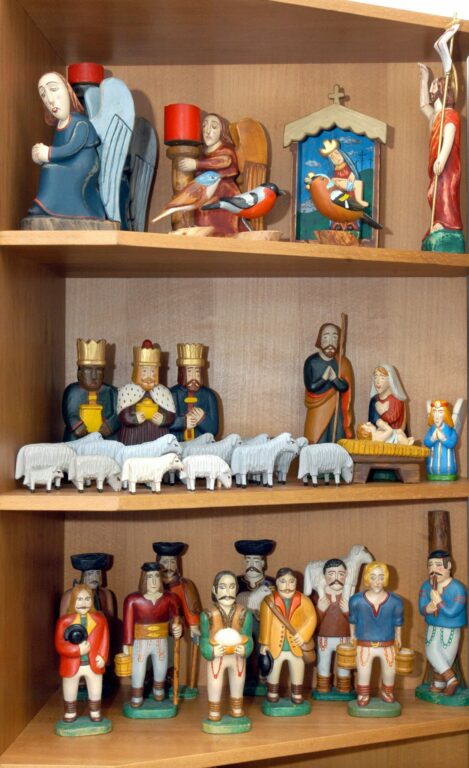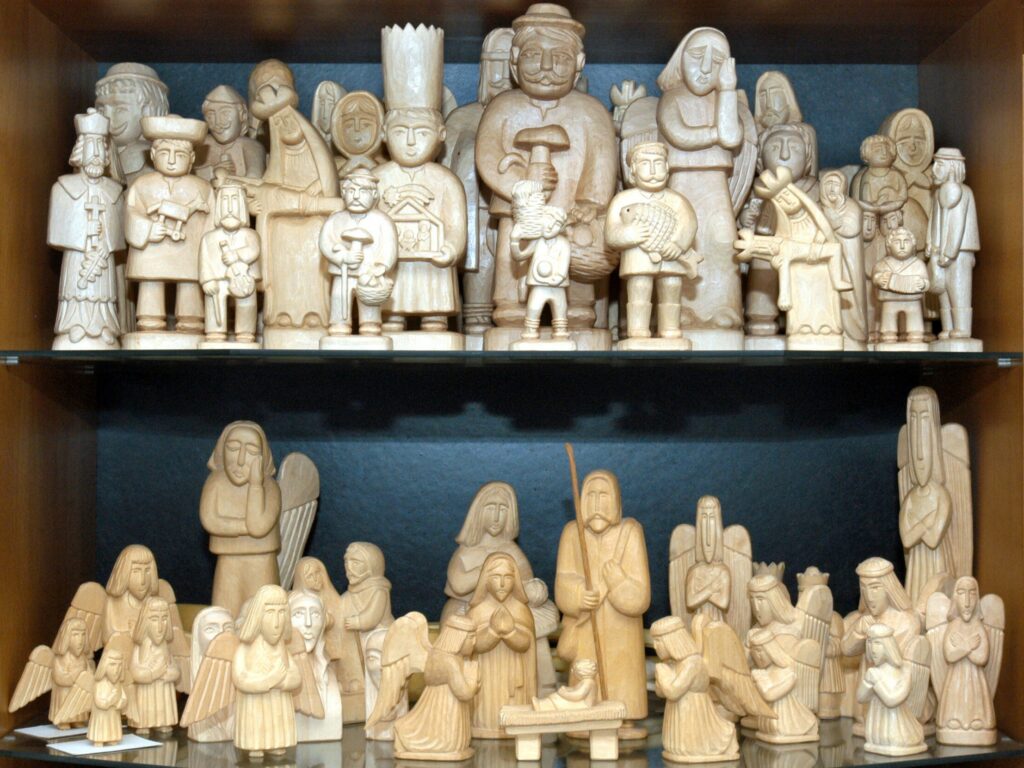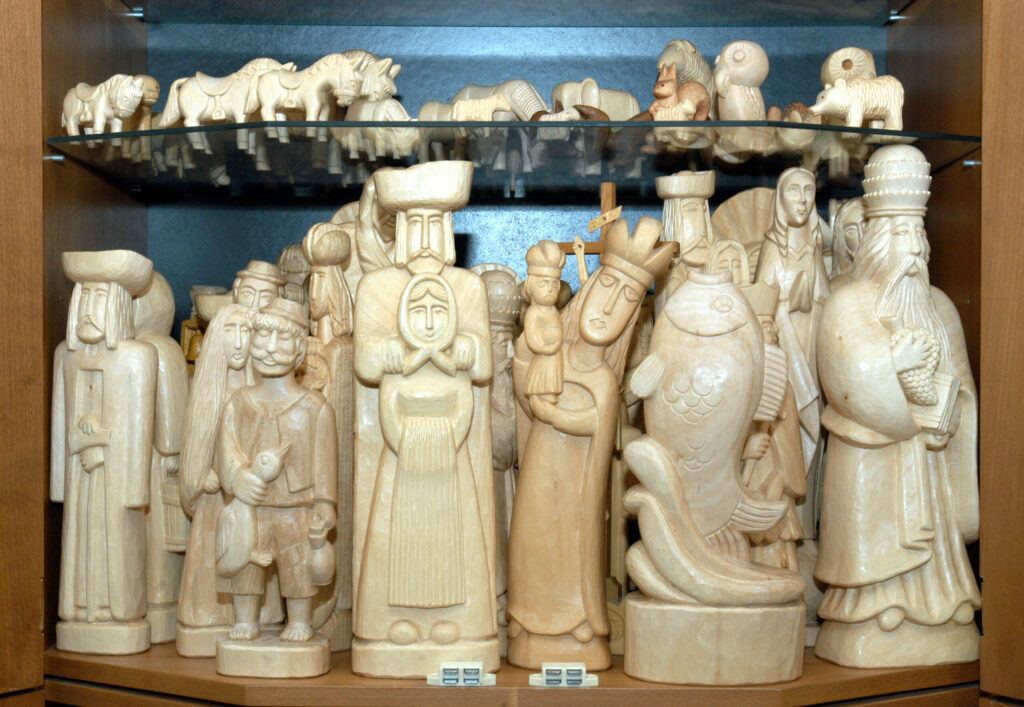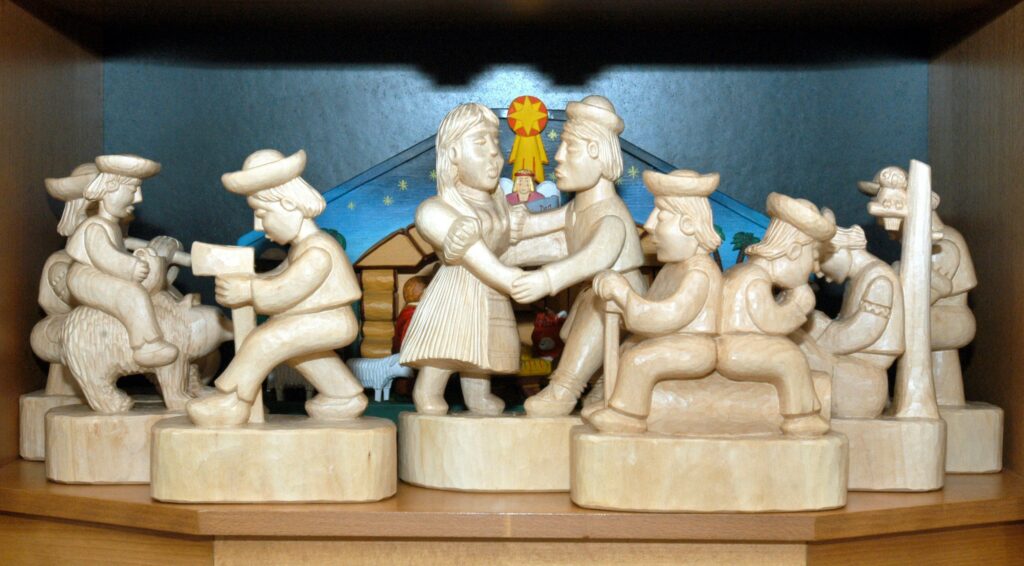Native of Štiavnické Bane, he spent his childhood and youth in a village on the banks of the Hron River. After graduating from the University of Mining in Ostrava, he settled in Košice, where he worked as a research worker at VSŽ. He completed his interest in woodcarving in the late 1960s with his own woodcarving activities. He developed his...
Native of Štiavnické Bane, he spent his childhood and youth in a village on the banks of the Hron River. After graduating from the University of Mining in Ostrava, he settled in Košice, where he worked as a research worker at VSŽ. He completed his interest in woodcarving in the late 1960s with his own woodcarving activities. He developed his unique woodcarving style and distinctive artistic expression, which is based on the principles of artistic abbreviation, using simple, uncomplicated lines. Despite considerable simplification, he is able to instill uniqueness of personality into his figures and figurines, even emotional states, particularly reflected in the sculptures depicting the Crucifixion. He uses polychrome with pleasure, especially in sacred art, which becomes an equal expressive medium in his sculptures. Through his carving style and colors, he achieves a beautiful, playful expression in canonical figures of the nativity scene (Baby Jesus, Virgin Mary, St. Joseph, Gaspar, Melicher, Balthazar) and everyday life characters, dignity, and serenity in sacred themes, especially in the depiction of the Madonna, where the symmetrical placement of the child evokes peace and harmony. A prominent element of his works is the simplified, abbreviated garment that remains readable and expresses the occupation, status, or age of the portrayed figure. These characteristics are also evident in large-scale sculptures created at carving symposia in Raslavice, Myslava, Rozhanovce, and elsewhere. Despite the apparent simplicity of his work, a deliberate approach of a single author is noticeable when comparing multiple pieces. Ján Krajčí has been collaborating with the Center for Folk Art Production for over a quarter of a century. Therefore, it is no wonder that his sculptures of an Angel and a Fairy watch over the Courtyard of Crafts in Bratislava. Since 2002, he has been retired and fully devoted to woodcarving. His nativity scenes are highly sought after, with several pieces being gifted by the President of Slovakia to various foreign guests. Among children, especially during symposia and various presentation events, his sheep and horses attract attention, showcasing the principles of woodcarving. He creatively manifests himself by using burls, shaping the naturally deformed wood into faces representing human characters and moods. This work suggests another dimension of Krajčí’s woodcarving that may be revealed over time. In 1990, he obtained a qualification certificate as a master of folk art production in the wood production sector, awarded by the Commission for Assessing the Professional Competence of Folk Art Production Workers.
